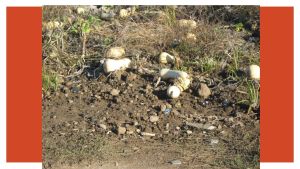Wikisage, the free encyclopedia of the second generation, is digital heritage
Lagenaria
| bottle gourd Lagenaria siceraria (Molina) Standl. | ||||
 | ||||
| Reich | Pflanzen | Plantae | ||
| Stamm | Blütenpflanzen | Magnoliophyta | ||
| Klasse | Bedecktsamer | Magnoliopsida | ||
| Ordnung | Veilchenartige | Violales | ||
| Familie | Kürbisgewächse | Cucurbitaceae | ||
| Gattung | Lagenaria | Lagenaria | ||
| Art | Flaschenkürbis | Lagenaria siceraria | ||
| Autoren | (Molina) Standl. | |||
| Jahr | 1930 | |||
|
Phylogenetische Systematik | ||||
| Ordnung | Kürbisartige | Cucurbitales | ||
| Familie | Kürbisgewächse | Cucurbitaceae | ||
The bottle gourd or calabash(Lagenaria siceraria) is a climbing plant from the gourd family (Cucurbitaceae). Two geographical subspecies of the calabash have been described:
- ssp. siceraria (L.s. var laevisperma Millan)
- ssp. asiatica (Kobyakova)Heiser [1](syn. L.vulgaris Ser.ssp.asiatica Kobyakova)
The classification by fruit form proposed by I. Grebenšcikov has not yet become established, but should be mentioned here for the sake of completeness:
- convar clavatina Greb.
- convar cugurdina Greb.
- convar siceraria[2]
Description
The annual plant forms creeping and climbing, branched tendrils with alternate, soft, hairy leaves. The leaf edges are round with entire margins.
The plant produces monoecious white flowers that open at dusk. The pumpkin fruit is variable in shape, but is usually spherical or shaped like a bottle with a bulbous part and an elongated neck. The fruits can reach lengths of over one meter. The pericarp of the fruit becomes woody and hard. The hollowed-out fruits are therefore often used to make storage and drinking vessels, drums, lamps and other utensils. File:Flaschenkürbis Pito.jpg|Eine Kalebassen-Schale mit Pito, einem Bier aus Hirse, das in Ghana, Nigeria und anderen Teilen Westafrikas gebraut wird.
-
Flaschenkürbis (Lagenaria siceraria), Blüte.
-
Flaschenkürbis (Lagenaria siceraria), unripe fruit.
-
Flaschenkürbis (Lagenaria siceraria), original by: Afbeeldingen der artseny-gewassen met derzelver Nederduitsche en Latynsche beschryvingen (1796).
-
Flaschenkürbis (Lagenaria siceraria), original by: Afbeeldingen der artseny-gewassen met derzelver Nederduitsche en Latynsche beschryvingen (1796)..
Origin
The species originally comes from tropical regions. The oldest finds from Zambia, Thailand and Peru date back to around 12,000 BC. The cultivation of the fruit and its use as a storage container are very old. The plant is mentioned in ancient times by Pliny the Elder and in the Middle Ages in the Capitulare de villis, where its use as a vegetable is mentioned
Andere Namen
Synonyme:
- Cucurbita lagenaria L.
- Cucurbita siceraria Molina 1782[4]
- Cucurbita leucantha Duchesne
- Cucurbita longa hort.
- Lagenaria lagenaria (L.) Cockerell, nom. inval.
- Lagenaria leucantha Rusby
- Lagenaria vulgaris Ser.
- L siceraria var. laevisperma Millan[5][6]
International:
- Chile: calabacera
- Englisch: bottle gourd, calabash[7]
- Italienisch: Zucca bottiglia[8]
- Französisch: calebasse, gourde
Weblinks
Deekers Waters Deena u.a.2001 Diversity in landraces and cultivars of bottle gourd Lagenaria siceraria Cucurbitaceae as assessed by random amplified polymorphic DNA Genetic Resources and Crop Evolution 48:369-380-
Einzelnachweise
| References: |
|




